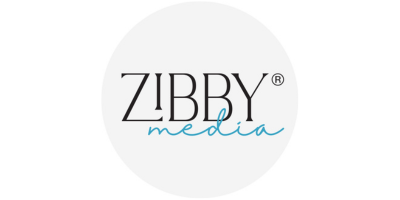In the world of freelancing, one price doesn’t fit all jobs. That’s the beauty—and curse—of being a contractor.
Coming up with a fee can be challenging. Do you charge different amounts depending on the client or publication? How exactly do you figure out what a client wants, so you don’t wind up spending more time on a project and earning less as a result?
Also on Mediabistro


Here are a few things every self-employed professional should keep in mind when setting your freelance writing rate.
1. Your experience
First, it helps to get a ballpark of where you stand. Several factors go into setting your rate, such as where you live and how much experience you have.
In the magazine arena where most publications pay per word, it’s typically only the experienced writers who have bargaining power.
Those just starting out may want to work for less than the going rate in order to build clips. Kate Silver, a Chicago-based freelance writer who has penned articles for Men’s Health and Spirit, isn’t a newbie but says she can be “amenable” to a lower rate if the piece involves less research than usual.
Aubre Andrus, a writer from Chicago who creates marketing collateral and has written for National Geographic Traveler and FamilyFun, says she sets a salary goal for herself and calculates her hourly rate from there.
For her, the fact that she isn’t working on income-generating tasks 40 hours a week was a determining factor.
“This rate helps me devise my per-project fee and helps me decide if a project is worth my time,” explains Andrus. That, along with tracking her monthly earnings, has helped her stay on target to attain her salary goal.
Catey Hill, a California-based author and reporter who writes for DowJones, says she uses both a project and hourly fee system. Once you have a gist of your rate, you can see how it compares to market rates; then, use it to devise lump-sum fees and per-word rates.
2. The venue
Depending on what outlet you write for, the pay structure will differ. In general, magazines pay freelance writers per word, and larger, national pubs usually have bigger budgets to work with than online outlets or startups.
In copywriting, it’s standard to accept a project fee or an hourly rate, but working on site could net you an hourly fee. Meanwhile, proofreading typically pays less than copywriting and freelance magazine writing.
According to the Freelance Industry Report, 18.7 percent of copywriters earn from $50 to $59 an hour, 16.5 percent make $70 to $79 and 17.3 percent make anywhere from $100 to $150 per hour.
At least 46.2 percent of editors and copyeditors fell between the $20 and $39 an hour range. In freelance writing, 19.3 percent made $50 to $59 an hour, 10.1 percent made $20 to $29 an hour and only 12.2 percent earned $100 to $150 an hour.
Based on this information and your own market research, you can come up with a rate that you feel good about. You can always raise it over time as you build up more experience.
In knowing how different writing venues pay, you can save a lot of time and aggravation: For example, don’t even think of pitching an article at an hourly rate.
3. Your time
Whether you charge hourly or by the project, painting an accurate picture of what the project entails is key. Many copywriters find that clients aren’t always sure what they want for a website or brochure, while publication editors typically outline goals before they assign the piece.
To give a good estimate, you need to know how efficiently you work, and you can only do that by practicing.
“With project-based payment, you need to make sure that you are very clear on the assignment, so you don’t end up pricing your services too low,” Hill says.
Hill has had situations where an hourly-billed project took longer than expected. Instead of asking for more money, she honored her original quote. That seems to be the consensus in the freelance world, which is why it is so vital to master the guesstimating game.
That happened to Andrus when she underestimated the time it would take to copy edit a novel. “I sat on the couch all day and read it from start to finish in one sitting,” she recalls.
She didn’t charge the client extra for her mishap, but it taught her a lesson about the importance of assessing her time.
To gauge your own time, try an online tracker like Toggl or a stopwatch to see how long it takes you to complete certain tasks.
4. The scope of the work
You have to know, specifically, how much work is involved to establish your rate, no matter how you charge.
Emily Suess, a blogger and copywriter from Indiana who has freelanced for nearly a decade, says she asks clients in-depth questions to determine the scope of a project.
For instance, how long each blog post should be, what the lead time is, who provides topics and if she will need to use search engine optimization techniques on the content.
“When the client makes a request for something that lies outside of the initial scope, I let them know immediately and offer to prepare a quote for those additional services,” Suess notes.
Seasoned copywriters, journalists and editors learn to identify potential obstacles early and to ask clients if they foresee those situations arising.
If the client can’t give you specifics, think about situations that took longer than expected in the past and let him know that you will charge extra if those incidents occur with this project. For example, how many interviews will you need to conduct?
Are you expected to meet on site with a client or interviewee? How many rounds of revisions are typical?
Like other journalists, Silver says revisions are part of the fee you accept when you write for a publication.
In the magazine business, you don’t tell an editor how many revisions you’ll include as you would with a copywriting client; magazine editors expect that you will revise the work as many times as they see fit.
So, if multiple revisions of that website or promotional copy concern you, include at least one round of revisions in the initial fee and bill hourly for any additional rewrites that may be needed.
With magazine and online outlets, simply ask upfront how many revisions a typical piece goes through before you agree to the assignment.
In the end, it’s good to be mindful of what you want to earn, but don’t drive yourself crazy if you don’t always make that specific amount.
Your freelance writing rate will change (and hopefully, grow) as you move forward in your career.



.png)



